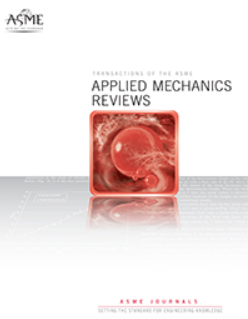Models for the Interplay of Mechanics, Electrochemistry, Thermodynamics and Kinetics in Lithium-Ion Batteries
IF 16.1
1区 工程技术
Q1 MECHANICS
引用次数: 4
Abstract
The interplay of mechanics, electrochemistry, thermodynamics and kinetics in lithium-ion batteries is summarized. Attention is focused on models for such interactions but is restricted to issues related to all solid-state batteries with lithium metal anodes and a solid electrolyte, as such systems potentially enable higher energy density. Models for diffusion induced stress and fracture due to lithiation swelling and shrinkage are overviewed. Transport models for lithium ions in solid electrolytes are summarized. Mechanical effects are significant in binary ion conducting materials. The effect of stress on the kinetics of lithium flux across electrode-electrolyte interfaces is described. Such constitutive laws are relevant to modeling the morphological stability or instability of the electrode-electrolyte interface. The preceding topics are relatively well developed in regard to modeling. The models that have been developed are fairly successful in terms of agreement with experimental observations, though further work is needed in all areas to explore phenomena that become prominent as technology and materials development advances. An area that is less mature is modeling of the nucleation and growth of lithium filaments in solid electrolytes that lead to cell short circuits. The models that have been developed for this phenomenon are described. They are not fully consistent with the observed behavior of lithium filament and dendrite growth in solid electrolytes. Thus, filament growth and void growth in the lithium metal electrode that is closely connected with filament growth remain open issues that need further model development at a fundamental level.锂离子电池力学、电化学、热力学和动力学相互作用的模型
综述了锂离子电池力学、电化学、热力学和动力学的相互作用。人们的注意力集中在这种相互作用的模型上,但仅限于与所有具有锂金属阳极和固体电解质的固态电池相关的问题,因为这样的系统有可能实现更高的能量密度。概述了锂化膨胀和收缩引起的扩散应力和断裂模型。综述了锂离子在固体电解质中的输运模型。在二元离子导电材料中,力学效应是显著的。描述了应力对锂通量通过电极-电解质界面动力学的影响。这些本构定律与模拟电极-电解质界面的形态稳定性或不稳定性有关。前面的主题在建模方面发展得相对较好。尽管随着技术和材料发展的进步,需要在所有领域做进一步的工作来探索变得突出的现象,但已经开发的模型在与实验观察的一致性方面是相当成功的。一个不太成熟的领域是模拟导致电池短路的固体电解质中锂细丝的成核和生长。本文描述了为这一现象开发的模型。它们与在固体电解质中观察到的锂丝和枝晶生长行为不完全一致。因此,与长丝生长密切相关的锂金属电极的长丝生长和空隙生长仍然是一个悬而未决的问题,需要在基础层面进一步发展模型。
本文章由计算机程序翻译,如有差异,请以英文原文为准。
求助全文
约1分钟内获得全文
求助全文
来源期刊
CiteScore
28.20
自引率
0.70%
发文量
13
审稿时长
>12 weeks
期刊介绍:
Applied Mechanics Reviews (AMR) is an international review journal that serves as a premier venue for dissemination of material across all subdisciplines of applied mechanics and engineering science, including fluid and solid mechanics, heat transfer, dynamics and vibration, and applications.AMR provides an archival repository for state-of-the-art and retrospective survey articles and reviews of research areas and curricular developments. The journal invites commentary on research and education policy in different countries. The journal also invites original tutorial and educational material in applied mechanics targeting non-specialist audiences, including undergraduate and K-12 students.

 求助内容:
求助内容: 应助结果提醒方式:
应助结果提醒方式:


